Semaphorins, Plexin Receptors, and Related Molecules
- Search List
- Background
- Molecules
- Functions
- Disease
- Case Study
Related Symbol Search List
- ARHGEF12
- CD72
- DCBLD2
- Her2
- ERBB2
- HGF
- Integrin beta 1
- Kdr
- L1CAM
- Neuropilin-1
- NRP2
- PLXDC1
- PLXNA1
- PLXNA2
- PLXNA3
- PLXNA4
- PLXNB1
- PLXNB2
- PLXNB3
- PLXNC1
- PLXND1
- CD45
- SEMA3A
- SEMA3B
- SEMA3C
- SEMA3E
- SEMA4A
- SEMA4B
- SEMA4C
- SEMA4D
- SEMA4G
- SEMA5A
- SEMA6A
- SEMA6B
- SEMA6C
- SEMA6D
- SEMA7A
- TREM2
Immunology Background
Background
Semaphorins and plexin receptors are a family of cell guidance molecules that are involved in many physiological functions:
Semaphorins
A large group of molecules that can be secreted or membrane-bound. They play a role in many areas, including neural development, vascular development, cardiac growth, and immune responses. Semaphorins were originally thought to guide axons, but are now known to have broader roles in morphogenesis. Semaphorins exert their effects primarily through receptors known as plexins, along with neuropilins in some cases. Understanding these molecules is essential for unraveling mechanisms of cell communication and their implications in various diseases.
The Semaphorin family has expanded to encompass 30 proteins categorized into 8 classes based on their structural characteristics and distribution across different organisms. Among these classes, Class 1 and 2 Semaphorins are exclusive to invertebrates, while classes 3 to 7 are specific to vertebrates, except for the Class 5 member, Sema-5c, which is also present in invertebrates. Viruses contain Class V members.
Regarding their cellular localization, members of Class 1, 4, 5, and 6 are transmembrane proteins, whereas members of Class 2, 3, and V are secreted. Class 7 members are linked to glycosylphosphatidylinositol (GPI). Furthermore, certain members like those from Classes 4, 5, and 7, and potentially others, undergo cleavage and are subsequently released into the extracellular space.
Classification
- Classical Semaphorins: Secreted proteins that interact with both plexins and neuropilins. They are typically involved in axonal guidance.
- Transmembrane Semaphorins: These are membrane-bound, functioning in direct cell-to-cell interactions.
Functions of Semaphorins
- Axon Guidance: Semaphorins are well-known for their role in guiding axons during neural development. They can attract or repel axonal growth cones, directing their pathfinding and helping establish neural circuitry.
- Neuronal Migration: Semaphorins also regulate the migration of neurons during brain development, ensuring that neurons reach their appropriate locations in the nervous system.
- Synaptogenesis: Some Semaphorins are involved in the formation and maintenance of synapses, playing a role in synaptic connectivity and plasticity.
- Immune Responses: Certain Semaphorins participate in immune responses by regulating the migration and function of immune cells, contributing to processes like inflammation and immune surveillance.
- Angiogenesis: Semaphorins have been implicated in the regulation of blood vessel growth (angiogenesis) by influencing endothelial cell behavior and vascular development.
Plexins
Large transmembrane proteins that function as receptors for semaphorins. They are divided into four classes (PlexinA–D), and each class interacts with a specific class of semaphorins. When semaphorin binds to the extracellular region of a plexin, the plexin is activated and sends a signal to the inside of the cell.
Plexin receptors, which serve as the primary receptors for Semaphorins, are categorized into four classes (A–D). Each class of plexin receptors interacts with specific classes of Semaphorins to facilitate signaling processes. Apart from plexin receptors, several other membrane-associated receptors and co-receptors play crucial roles in Semaphorin signal transduction. These proteins directly engage with Semaphorins to initiate signaling pathways (e.g., integrins), function as co-receptors for ligand binding (e.g., Npn1,2), and contribute to complex receptor assemblies (e.g., RTKs) that are essential for transmitting Semaphorin-mediated signals.
Mechanism of Action
- Plexins function as signal transducers, activating intracellular signaling pathways upon semaphorin binding.
- They often interact with other proteins, including small GTPases, which play roles in cytoskeletal dynamics during cell migration.
Functions of Plexin Receptors
- Mediators of Semaphorin Signaling: Plexin receptors transduce signals initiated by Semaphorin binding, regulating cellular responses such as cytoskeletal rearrangements and gene expression changes.
- Axon Guidance: Plexin receptors are crucial for translating Semaphorin guidance cues into axonal responses, helping neurons navigate to their appropriate targets during development.
- Cell Migration: Plexin receptors play a role in regulating cell migration in various contexts, such as neuronal migration during brain development and immune cell migration in the immune response.
- Synaptic Plasticity: Some Plexin receptors are involved in synaptic plasticity, influencing the strength and efficacy of synaptic connections in the nervous system.
- Tumor Suppression: Certain Plexin receptors have been implicated in tumor suppression by regulating cell proliferation, migration, and invasion in cancer cells.
Related Molecules
- Neuropilins: These are co-receptors for certain semaphorins that can enhance the functions of plexins. They participate in neural and vascular development.
- GTPases: Molecules such as Rac, Rho, and Cdc42 are critical downstream effectors activated by plexin signaling, influencing cytoskeletal rearrangements.
- Integrins: These cell surface receptors work alongside semaphorin and plexin signaling to mediate cell adhesion and migration.
The semaphorin-plexin signaling axis plays pivotal roles in various biological processes, from embryonic development to pathological conditions such as cancer. Understanding these molecules and their interactions is vital for developing therapeutic interventions for diseases involving aberrant signaling, particularly in neurodevelopmental disorders and cancers. Research continues to reveal the complexity and versatility of this system, highlighting its importance in both basic biology and medical applications.
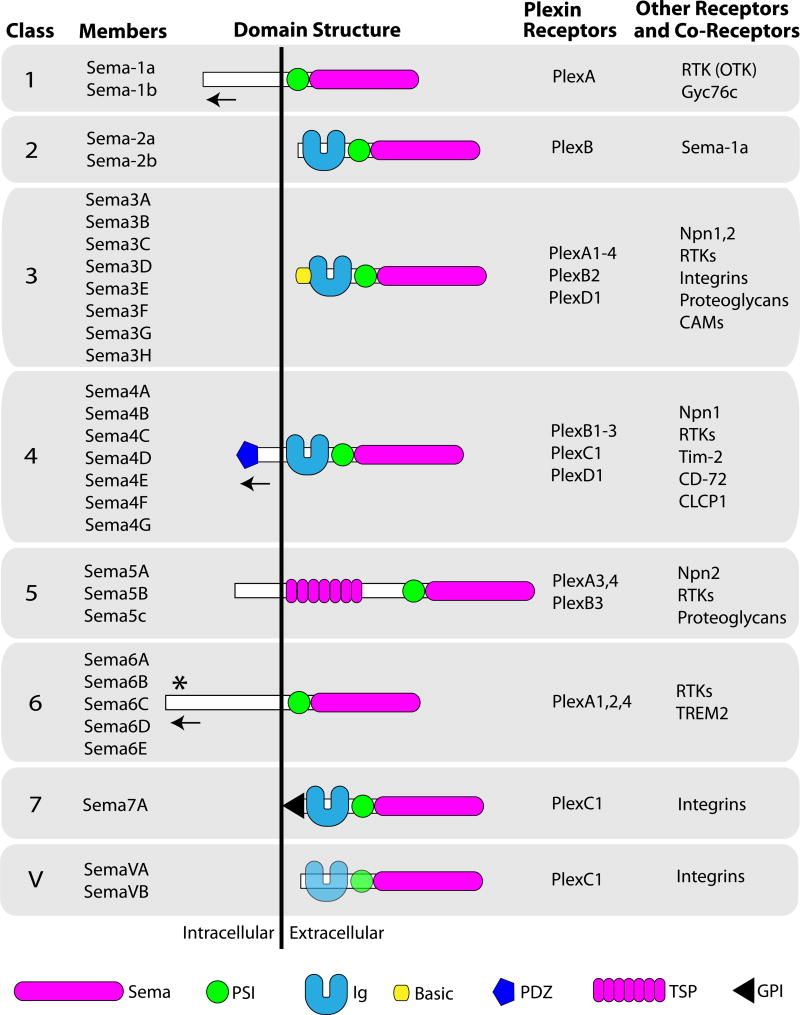 Fig.1 The semaphorin protein family and their receptors. (Alto LT, et al., 2017)
Fig.1 The semaphorin protein family and their receptors. (Alto LT, et al., 2017)Semaphorins, Plexin Receptors, and Related Molecules
The following is an introduction to some semaphorins, plexin receptors, and related molecules:
| Type | Details |
|---|---|
| Semaphorins |
Semaphorins are a class of signaling molecules that are primarily involved in cell migration and axon guidance.
These molecules usually regulate processes such as cell growth, migration, and neuronal development by binding to ligands, and participate in immune responses and cancer biology. |
| Plexin Receptors |
Plexin is a receptor for semaphorin, involved in directional cell migration and neural development.
These receptors affect cell migration, endothelial cell function, and directional growth of neurons by mediating semaphorin signaling. |
| Plexin-Associated Molecules |
ARHGEF12: Rho guanine nucleotide exchange factor 12, potentially involved in signaling pathways related to plexins and semaphorins. CD72: Receptor protein tyrosine phosphatase is involved in immune cell regulation. DCBLD2: Discoidin, CUB, and LCCL domain-containing protein 2, with roles in cell adhesion and signaling. Integrin beta 1: Cell surface receptor involved in cell adhesion and migration. Kdr: Kinase inserts domain receptor, a VEGF receptor involved in angiogenesis. L1CAM: Neural cell adhesion molecule involved in neural development. Neuropilin-1 and NRP2: Co-receptors for semaphorins and other ligands, regulating axon guidance and angiogenesis. CD45: Protein tyrosine phosphatase is involved in T cell activation and signaling. TREM2: Triggering receptor expressed on myeloid cells 2, involved in innate immune responses and phagocytosis. |
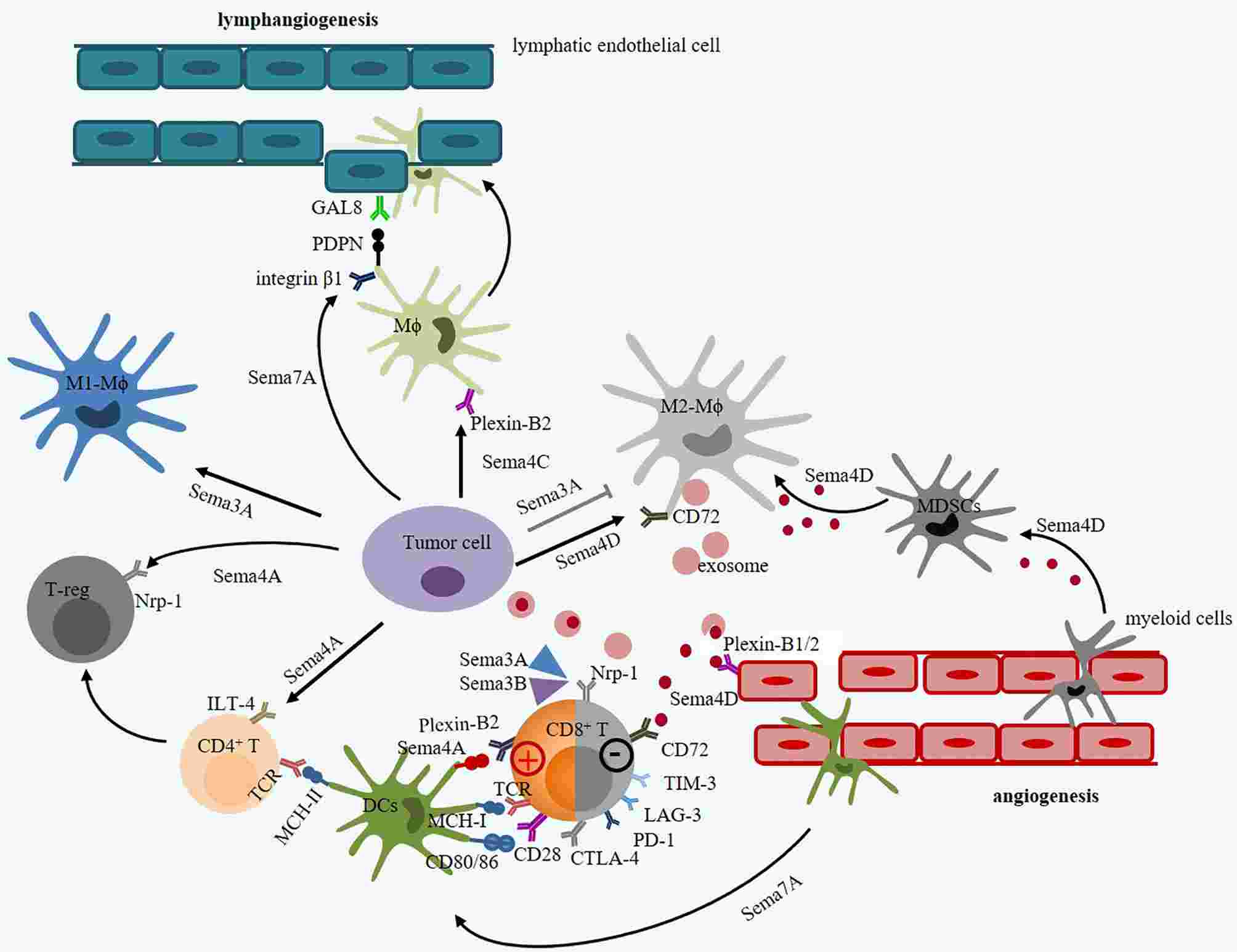 Fig.2 The intricate roles of immune semaphorins and their receptors in tumor microenvironment. (Jiang J, et al., 2022)
Fig.2 The intricate roles of immune semaphorins and their receptors in tumor microenvironment. (Jiang J, et al., 2022)Functions of Semaphorins and Plexin Receptors
Cell Migration
- Semaphorins influence the migration of various cell types, including immune cells and endothelial cells.
- Example: Semaphorin 3A (Sema3A) inhibits the migration of fibroblast cells by promoting cytoskeletal reorganization. Sema3A signals through Plexin-A1, leading to the activation of RhoGTPases, which in turn affects cell movement.
Axon Guidance
- In the developing nervous system, semaphorins are critical for guiding axons to their appropriate targets.
- Example: Semaphorin 3B (Sema3B) repels certain types of growing axons (e.g., those from sensory neurons) by activating Plexin-A3. This interaction helps establish proper neural connections by preventing inappropriate projections.
Immune Response
- Semaphorins and plexins contribute to the regulation of immune cell trafficking and function.
- Example: Semaphorin 4A (Sema4A) modulates T cell activity by interacting with Plexin-B1. This interaction can affect T cell activation and differentiation, showcasing semaphorins' role in immune surveillance and response.
Cancer Progression
- Semaphorins can act as tumor suppressors or promoters depending on the context, influencing tumor growth, metastasis, and angiogenesis.
- Example: Semaphorin 3F (Sema3F) is often downregulated in various cancers, such as breast cancer. It acts as a tumor suppressor by inhibiting cell proliferation and promoting apoptosis through its interaction with Plexin-A1, thus limiting tumor growth and spread.
Semaphorins and plexin receptors are vital for many biological processes, including:
- Cell Migration: Directing the movement of endothelial and immune cells.
- Axon Guidance: Ensuring proper neural circuitry during development.
- Immune Response: Regulating T cell functions and modulating inflammatory responses.
- Cancer Progression: Acting in tumor suppression or promotion based on specific pathways and cellular contexts.
These diverse functions underscore the importance of semaphorins and plexins in normal physiology and their potential implications in diseases, especially cancer and neurodevelopmental disorders.
Semaphorins and Plexin Receptors in Disease
Neurological Disorders
- Axon Guidance Disruption: Semaphorins and Plexin receptors play crucial roles in guiding axons during neural development. Dysregulation of these signaling pathways can lead to errors in axon guidance, contributing to neurological disorders such as autism spectrum disorders, schizophrenia, and neuropathies.
- Neuronal Migration Defects: Semaphorins regulate neuronal migration processes, and abnormalities in these mechanisms have been linked to conditions like lissencephaly and other cortical malformations.
- Neurodegenerative Diseases: Altered Semaphorin-Plexin signaling has been implicated in neurodegenerative diseases like Alzheimer's, Parkinson's, and Huntington's diseases, affecting neuronal survival and function.
Cancer
- Tumor Growth and Metastasis: Semaphorins and Plexin receptors are involved in regulating tumor growth, invasion, and metastasis. Dysregulation of these molecules can promote cancer progression by influencing processes like angiogenesis, cell migration, and invasion.
- Tumor Suppression: Some Semaphorins act as tumor suppressors by inhibiting cancer cell proliferation and migration, suggesting a potential therapeutic target for cancer treatment.
- Therapeutic Targets: Targeting Semaphorin-Plexin signaling pathways in cancer has emerged as a promising approach for cancer therapy, with potential implications for inhibiting tumor progression and metastasis.
Immune System Dysregulation
- Inflammatory Disorders: Semaphorins and Plexin receptors are involved in immune responses, regulating processes like immune cell migration, inflammation, and immune cell interactions. Dysregulation of these signaling pathways can contribute to inflammatory disorders such as rheumatoid arthritis, inflammatory bowel disease, and asthma.
- Autoimmune Diseases: Aberrant Semaphorin-Plexin signaling has been implicated in autoimmune diseases like multiple sclerosis and type 1 diabetes, where immune system dysregulation leads to attacks on healthy tissues.
- Cancer Immune Evasion: Tumor cells can exploit Semaphorin-Plexin signaling to evade immune surveillance, promoting immune evasion and tumor progression.
In conclusion, Semaphorins and Plexin receptors play critical roles in various diseases, including neurological disorders, cancer, and immune system dysregulation. Understanding the involvement of these molecules in disease pathogenesis provides insights into potential therapeutic strategies targeting Semaphorin-Plexin signaling pathways for disease treatment and management.
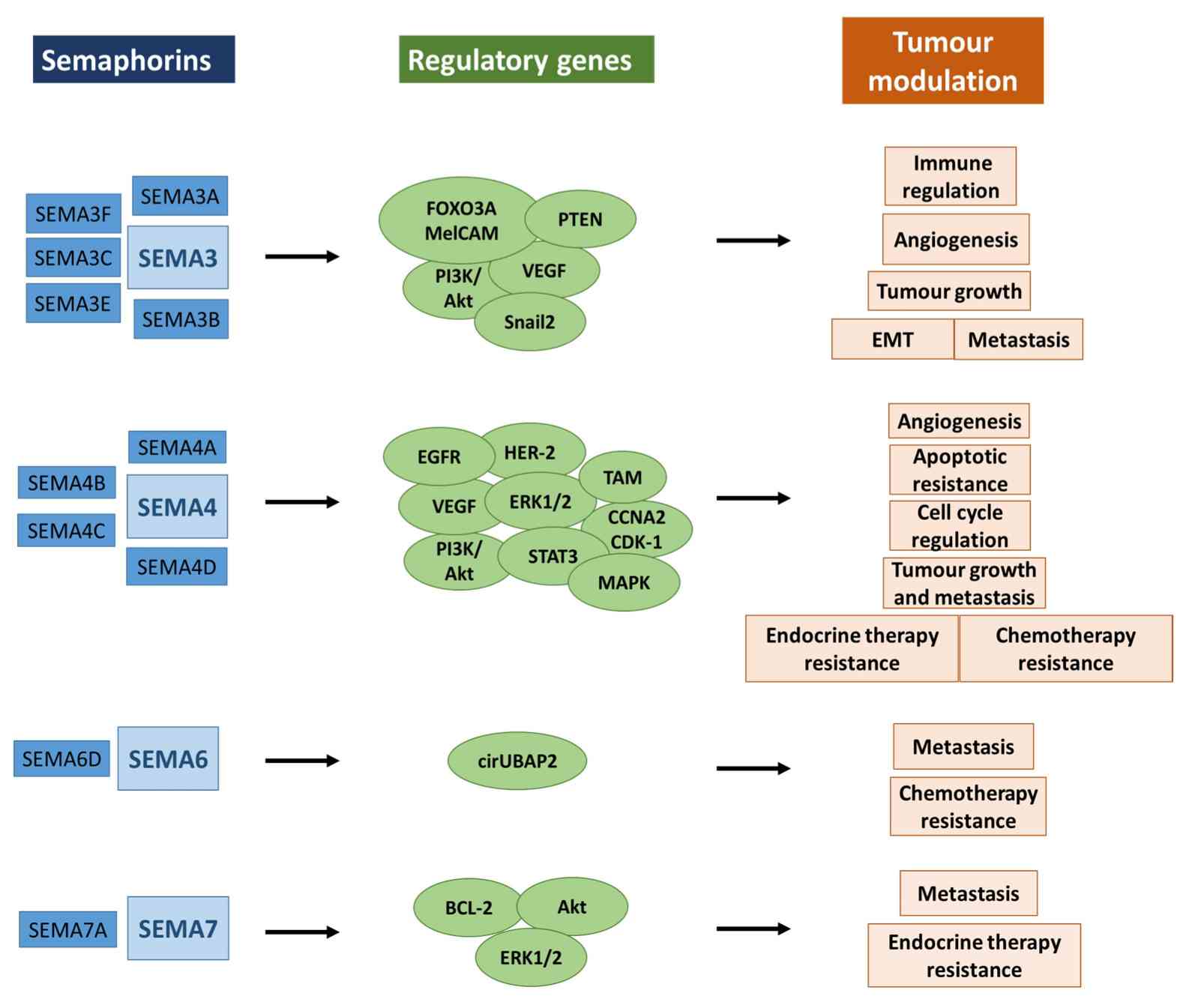 Fig.3 Semaphorins in cancer. (Aiyappa-Maudsley R, et al., 2023)
Fig.3 Semaphorins in cancer. (Aiyappa-Maudsley R, et al., 2023)Case Study
Case 1: Wang, N., Dhumale, P., Chiang, J. et al. The Sema3A receptor Plexin-A1 suppresses supernumerary axons through Rap1 GTPases. Sci Rep 8, 15647 (2018).
In neuronal development, the critical Rap1 GTPases play indispensable roles. They are vital for establishing the polarity of both neuronal progenitors and neurons, as well as for guiding neuronal migration within the embryonic brain. The accurate polarization of neurons and the formation of axons hinge on the meticulous control of Rap1 activity in terms of timing and location, a process mediated by guanine nucleotide exchange factors (GEFs) and GTPase-activating proteins (GAPs). While several Rap1 GEFs have been identified to orchestrate axon development in the cortex and hippocampus, less is understood about the specific GAPs that modulate Rap1 GTPase activity during neuronal maturation.
This study delves into the role of Sema3A and Plexin-A1 in regulating Rap1 GTPases during the polarization of hippocampal neurons. Sema3A has been observed to inhibit axon formation in cultured neurons on patterned substrates. Plexin-A1, acting as the signaling component of the Sema3A receptors, exhibits GAP capabilities for Rap1 GTPases. The research demonstrates that both Sema3A and Plexin-A1 suppress the generation of excess axons in cultured neurons, a process dependent on the activity of Rap1 GTPases.
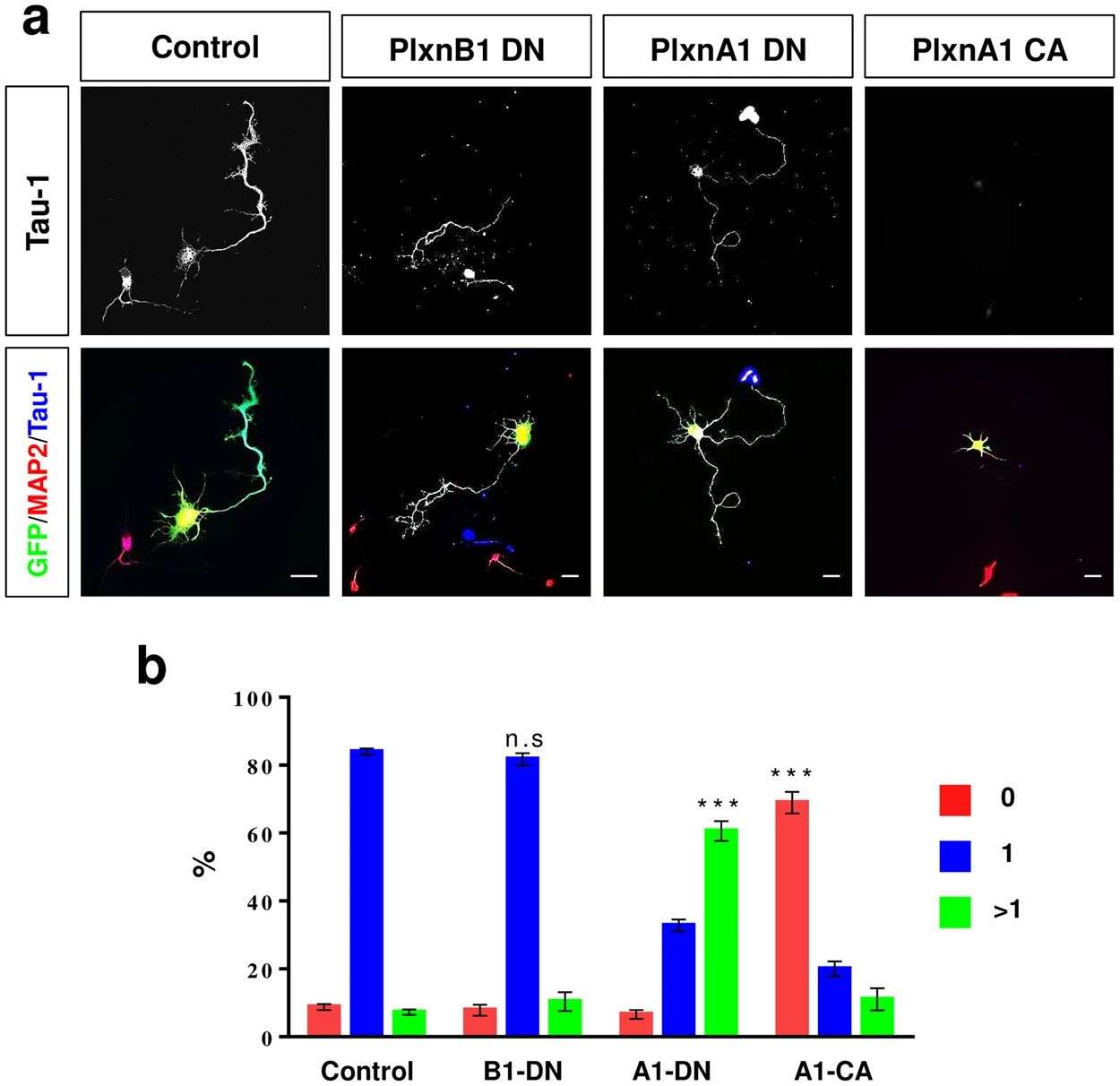 Fig.1 A-type plexins suppress the formation of axons.
Fig.1 A-type plexins suppress the formation of axons.Case 2: Casden N, Belzer V, El Khayari A, El Fatimy R, Behar O. Astrocyte-to-microglia communication via Sema4B-Plexin-B2 modulates injury-induced reactivity of microglia. Proc Natl Acad Sci U S A. 2024;121(22):e2400648121.
After central nervous system injury, a swift cellular and molecular reaction is triggered, which can have both favorable and unfavorable effects on neuronal survival in the initial days and raise the likelihood of neurodegeneration if prolonged. Semaphorin4B (Sema4B), a transmembrane protein primarily expressed by cortical astrocytes, has been identified as a contributor to neuronal cell death post-injury. The research demonstrates that cytokine expression is dampened in Sema4B-/- mice following cortical stab wound injury, with altered microglia/macrophage activity. In vitro studies reveal that Sema4B boosts microglial reactivity post-injury, indicating a ligand role for astrocytic Sema4B. Furthermore, injury-induced microglial reactivity is subdued in the presence of Sema4B-/- astrocytes compared to Sema4B+/- astrocytes. In vitro investigations suggest that Plexin-B2 functions as the receptor for Sema4B on microglia. Correspondingly, in mice with microglia/macrophage-specific Plexin-B2 deficiency, akin to Sema4B-/- mice, microglial/macrophage activity and neuronal cell death are diminished post-cortical injury. Finally, in double heterozygous Sema4B/Plexin-B2 mice, microglial/macrophage reactivity is also decreased post-injury, bolstering the concept that both Sema4B and Plexin-B2 are components of the same signaling pathway. Collectively, a model is proposed where astrocytic Sema4B, post-injury, heightens the response of microglia/macrophages through Plexin-B2, fostering increased reactivity.
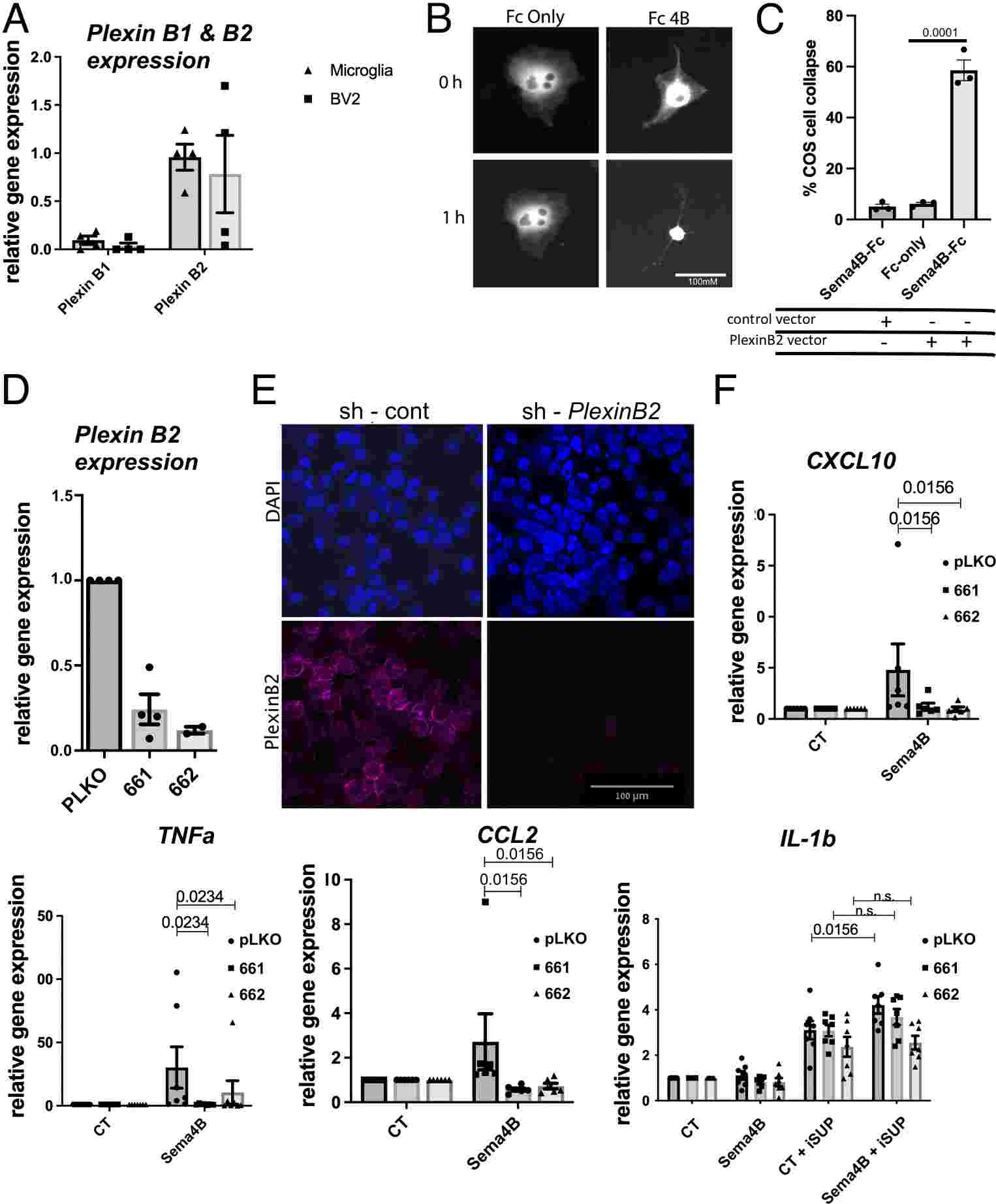 Fig.2 Plexin-B2 is the likely receptor for Sema4B in microglia.
Fig.2 Plexin-B2 is the likely receptor for Sema4B in microglia.Related References
- Suzuki, K., Kumanogoh, A. & Kikutani, H. Semaphorins and their receptors in immune cell interactions. Nat Immunol 9, 17–23 (2008).
- Alto LT, Terman JR. Semaphorins and their Signaling Mechanisms. Methods Mol Biol. 2017;1493:1-25.
- Aiyappa-Maudsley R, McLoughlin LFV, Hughes TA. Semaphorins and their roles in breast cancer: implications for therapy resistance. International Journal of Molecular Sciences. 2023; 24(17):13093.
- Jiang J, Zhang F, Wan Y, et al. Semaphorins as potential immune therapeutic targets for cancer. Front Oncol. 2022;12:793805.
